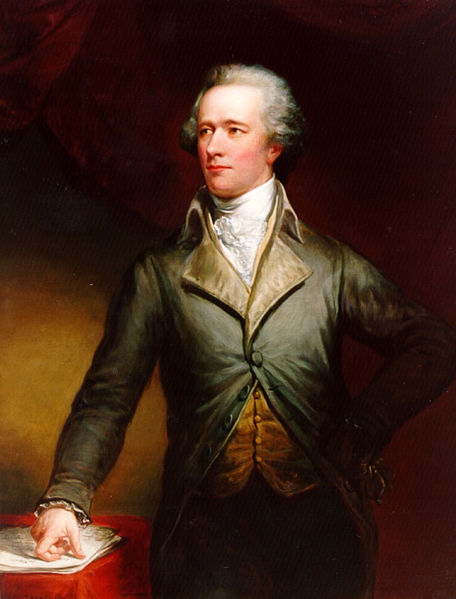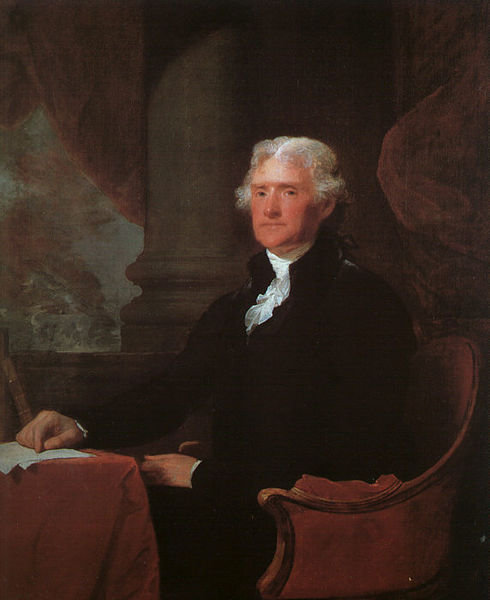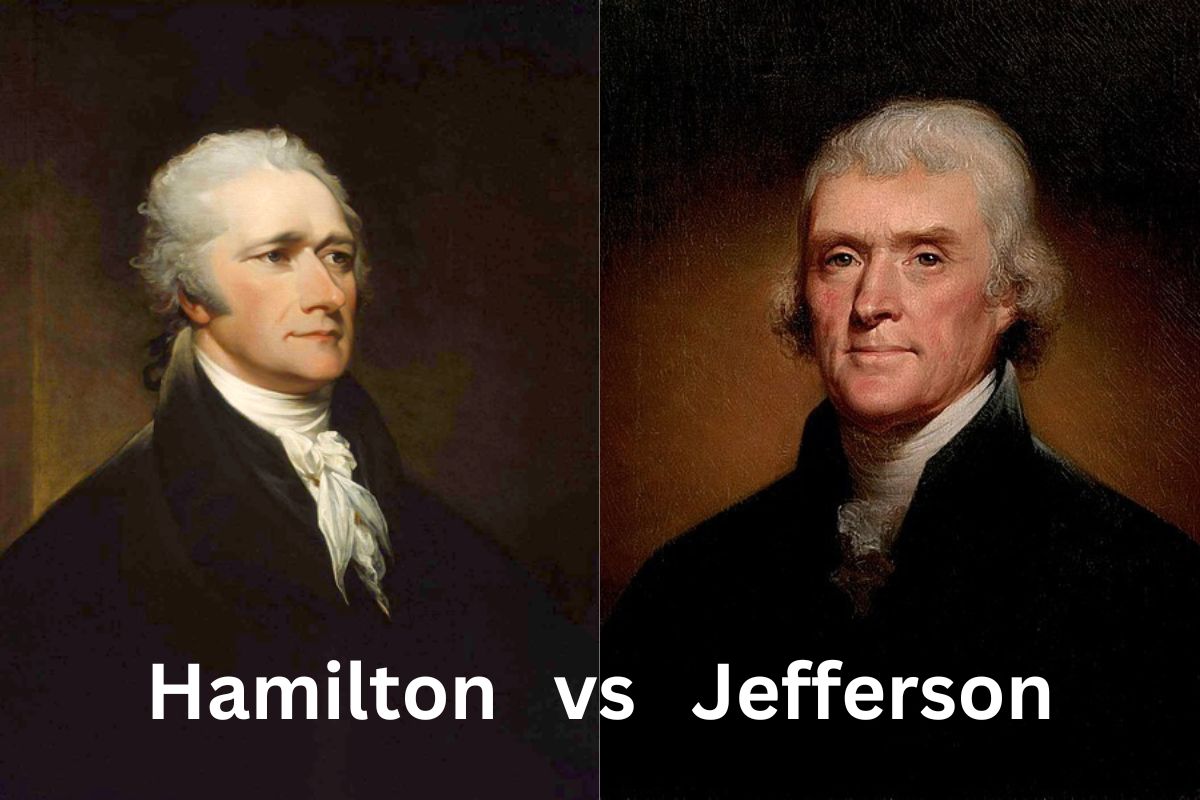Alexander Hamilton and Thomas Jefferson were two of the United States’ founding fathers and major political personalities in the country’s early years.
They held contrasting ideas on the role of government and the economy, which gave rise to two opposed political ideologies: Federalism (Hamilton) and Republicanism (Jefferson).
Hamilton believed in a strong central government, a national bank, and an economy focused on manufacturing. Jefferson advocated for small government, agrarianism, and the rigorous interpretation of the Constitution.

Also Read: Alexander Hamilton Facts
Alexander Hamilton was one of the most famous Federalists who helped design the United States’ financial system. He was the first Secretary of the Treasury and an outspoken supporter of a strong central government and a national bank. He believed in a strong manufacturing-based economy and thought the government should play a more active role in supporting economic growth.
In contrast, Thomas Jefferson was a Republican who believed in limited government and strict interpretation of the Constitution. He was an agrarianist who felt that farming and agriculture should be the foundation of the nation’s economy.

Also Read: Federalists vs Anti-Federalists
He was also a staunch defender of states’ rights and believed that the federal government should be given only limited authority.
Despite their differences, both individuals were instrumental in the establishment of the United States and its administration.
Hamilton’s fiscal measures helped to stabilize the country’s finances and create the groundwork for future economic progress, while Jefferson’s support for individual liberty and limited government helped to define the country’s political ideology.
| Aspect | Hamilton | Jefferson |
|---|---|---|
| Economic Policy | Favored strong central government, national bank, tariffs, and government subsidies to promote industrialization and economic growth. | Advocated for limited central government, agrarian society of independent farmers, opposed national bank, and favored decentralized economic approach. |
| Interpretation of the Constitution | Supported loose interpretation, broad powers for federal government, including implied powers necessary for objectives. | Favored strict interpretation, federal government limited to powers explicitly granted by the Constitution. |
| Foreign Policy | Leaned towards pro-British stance, close economic ties with Britain, strong military, and centralized foreign policy. | Had pro-French stance, sympathetic towards French Revolution, favored neutrality in European conflicts, and less interventionist foreign policy. |
| Vision for America | Envisioned modern, industrialized America with strong central government leading economic development and national affairs. | Envisioned America of independent farmers, states with significant autonomy, and minimal federal government involvement in citizens’ lives. |
Hamilton vs Jefferson
The main differences between Hamilton and Jefferson is that Hamilton advocated for a robust central government, the establishment of a national bank, and an economy that was heavily based on the production of goods, Jefferson was a strong supporter of limited government, agrarianism, and a literal reading of the Constitution.
Who won Hamilton or Jefferson?
Neither Alexander Hamilton nor Thomas Jefferson could be regarded to have “won” in the traditional sense. While Hamilton was influential in developing the nation’s financial structure and laying the groundwork for future economic growth, Jefferson’s political ideology and support for individual liberty left an indelible mark on the political landscape.
Also Read: Thomas Jefferson Facts
In certain ways, both men left a lasting impact on the United States, and their influence on American politics and society continues to this day. Their ideals and ambitions for the country continue to be debated and discussed, and both men are acknowledged as two of the most significant figures in American history.
What was the Compromise of 1790?
The 1790 Compromise was an agreement reached by Alexander Hamilton, Thomas Jefferson, and James Madison to settle their disagreements over the national debt and the site of the nation’s capital. The following were the main points of the 1790 compromise:
- The federal government would assume the states’ debt from the American Revolution, a significant triumph for Hamilton and the Federalist Party.
- The capital of the United States would be located on the Potomac River, benefiting the southern states and providing a victory for Jefferson and the Republican Party.
- The South agreed to support the construction of a national bank, which was a fundamental component of Hamilton’s financial proposal, in exchange for the federal absorption of state debt.
The 1790 Compromise helped to calm tensions between the Federalist and Republican parties, paving the path for the United States’ growth and prosperity.
It highlighted the country’s political leaders’ willingness to put aside their differences and work for the common good, and it remains a significant event in American history.
What were the key differences between Hamilton’s Federalists and Jefferson’s Republicans?
The Federalists, led by Alexander Hamilton, and the Republicans, led by Thomas Jefferson, had distinct and opposing views on the role of government and the economy. Key differences between the two parties included:
- Federalist: Strong central government, national bank, manufacturing-based economy.
- Republican: Limited government, strict construction of the Constitution, agrarian-based economy.
- Federalist: Support for a strong navy and strong relationships with Britain.
- Republican: Support for strict interpretation of the Constitution, states’ rights, and close ties with France.
- Federalist: Believed in a strong national government and the importance of commerce and industry.
- Republican: Believed in limited government and the importance of agriculture and individual liberty.
These contrasts gave rise to the United States’ two-party political system, which molded the country’s politics and economy for years to come.
The Federalist and Republican parties continued to have an impact on American politics long after Hamilton and Jefferson died, and their ideas and goals for the country are still important and disputed today.
